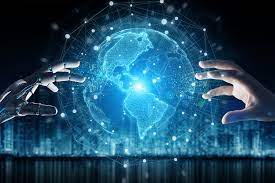Artificial Intelligence (AI) is a highly valuable instrument within the field of law and legal science. Within the field of artificial intelligence (AI), there exists a specific subfield that aligns with the subject matter that this article intends to elucidate. The academic topic known as “artificial intelligence and law” seeks to utilize the principles and techniques of AI in order to address, and ideally streamline the resolution of, various legal challenges. Simultaneously, artificial intelligence (AI) broadly leverages tools and approaches originally designed to address specific legal challenges.
The field of legal science acknowledges the significant utility of artificial intelligence, particularly in the context of lawful thinking. The concept of legal reasoning encompasses a wide range of ideas and principles that pertains to the systematic procedure of formulating and presenting a valid and defensible response to a specific legal inquiry. This may encompass determining the appropriate verdict to be rendered at the conclusion of a trial or ascertaining the requisite extent of an individual’s tax liability. Artificial intelligence (AI) applications have the potential to support legal reasoning by using their capabilities to scan extensive databases of legal texts and effectively determine the relevance of specific instances to existing judicial processes. The utilization of this instrument greatly enhances the efficiency of legal research by effectively eliminating extraneous information.
In addition, several programs possess the capability to engage in logical reasoning and autonomously generate precise responses. These applications are frequently acknowledged as intelligent or knowledge-based systems. Susskind categorizes legal expert systems into five distinct classes. The aforementioned systems encompass analytical organisms that offer specific solutions, planning systems that provide recommendations for optimal strategies to attain desired goals, procedural guides that assist in navigating intricate legal procedures, intelligent checklists that aid in evaluating compliance with legal requirements, and document modelling systems that automatically generate documents based on established guidelines and instructions provided by users. Document modelling systems are alternatively referred to as “document assembly systems”. Procedure-based systems and expert-based systems are the two main categories of document assembling software. Since procedural systems are designed to direct users through set procedures with a finite number of possible outcomes, they cannot be considered AI applications. In contrast, expert systems employ a search algorithm to identify rules inside their knowledge databases and subsequently utilize these rules to construct a decision tree, thereby generating the necessary solutions. Therefore, these systems possess the capability to offer resolutions to unforeseen inquiries posed in a natural linguistic manner.
The process of legal reasoning is intricately linked to the representation and evaluation of legal knowledge. Regrettably, within the realm of jurisprudence, this assertion has been substantiated as exceedingly challenging. The field of law does not operate as a closed system nor does it adhere to unchanging norms akin to those found in scientific disciplines. The concept encompasses values that are relative in nature and frequently necessitates the careful consideration and reconciliation of many interests. In addition, it was necessary to design specific tools to address the difficulty of managing ambiguities inherent in natural language. Researchers were also tasked with representing time (events and intervals) and assessing its influence on other variables, as well as depicting causality in relation to the legal concepts of “proximate cause” and “remote cause”. This involved representing the inner psychological states of individuals, such as emotions, goals, intentions, and so on, as well as their interpersonal relationships. Additionally, the researchers aimed to represent time, including events and intervals, and evaluate its impact on other variables.
Despite the myriad challenges that artificial intelligence encounters in the realm of law, its utilisation spans a wide array of circumstances. Legal reasoning is employed, for instance, to systematize legislation with the purpose of detecting any uncertainties within the legal text and facilitating the development of legislation. It is also utilized to construct models of legal precedents. Various technologies are available to support lawyers in their professional duties, including the identification of problematic sections in contracts and the development of effective strategies in case of litigations in intellectual property. Artificial intelligence has been implemented for the goal of facilitating automatic online dispute settlement. This application aims to resolve conflicts that arise between parties that have engaged in contractual agreements, such as those conducted through platforms like eBay. It is expected that algorithmic decision-making will not only assist judges, but also replace them in certain kinds of cases in the future. Nevertheless, this phenomenon gives rise to concerns over the openness of these proceedings due to the covert nature of algorithms, which consequently hinders public scrutiny. One possible approach to assessing potential biases in dynamically changing algorithms is through the examination of test cases, as suggested by reference. Despite the inherent lack of transparency in algorithms, it is paradoxical that they might be employed to enhance transparency in society by means of enhanced data analysis. The utilization of artificial intelligence in the analysis of extensive data sets is exemplified in various domains, including digital forensic.
In addition to the analysis of extensive evidence data to decrease their quantity or identify subtle connections among them, AI is also employed for predictive purposes, such as selecting the optimal crime scenes for the recovery of forensic samples. Moreover, there is an assumption that AI will play a role in law enforcement by means of self-governing robots that might potentially integrate with police departments.
Dr Ripon Bhattacharjee is Associate Professor, Department of Law, University of Engineering and Management, Kolkata. Sharabana Chattopadhyay is Assistant Professor, Department of Law, University of Engineering and Management, Kolkata.







